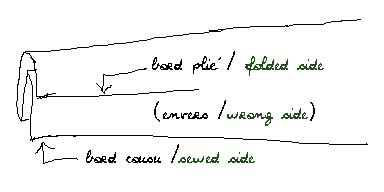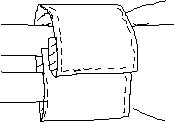Hello,
Tonight I’m sharing a few excerpts from a French vintage sewing book: Initiation à la Couture Familiale (it could translate as “Introduction to home sewing”). It’s actually a series of two books from 1960 and 1961, which were intended as school manuals or for the home sewer which didn’t have the chance to have sewing lessons at school. They were supposed to give girls and young ladies good fundations to sew quality garments. I found them at the Forney library (a specialised library in Paris devoted to craft, fashion, design and such which I adore, lots of interesting books there. Definitely check it out if you live in Paris or nearby!) some time ago. It’s funny to read the foreword now, because we don’t study sewing or any other home related matters in school nowadays, so it seems very dated when really it wasn’t such a long time ago. My mom had sewing lessons at school in the 60s and I didn’t in the 80s. I personnaly think it’s a shame, every boy and girl should learn some basics in sewing, knitting, cooking and such, it would be very useful!
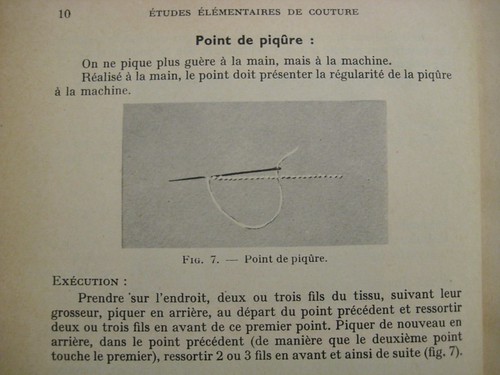
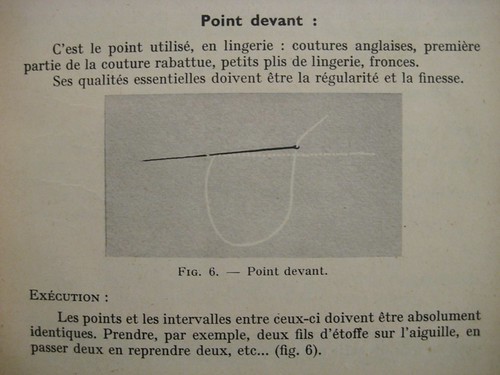
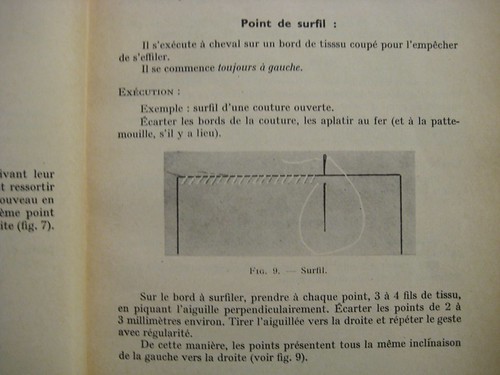 The text I’m showing you here is from the first section of the first book, teaching different kinds of stitches. By the way if you’re able to read French I suggest you read the French version of this article, because it’s a bit more comprehensive. The reason I’m sharing those pages today is because when reading this it struck me as delightfully old-fashioned. About the simple stitch is says that “We no longer stitch by hand, but use a machine”. Who would think it necessary to clarify this nowadays? All the other stitches are explained as hand stitches, and are supposed to be done this way. Including the overcasting stitch. A modern book would explain you to use your machine zigzag stitch or use a serger if you’re lucky enough to have one… They also make a difference between regular clothes and underwear, mentioning when a stich or seam finishing (pictures below) is more adapted to lingerie. I haven’t seen many modern book talking about lingerie stitches or seam finishes, except if they’re devoted to this particular subject. Who wears those fine and fancy petticoats and slips today? A few vintage fashion lovers. I do love slips, I find them very elegant and feminin and useful, and I think they are very pretty objects, but judging from how hard they are to find I guess they are not many of us. And among those, who take the time to sew them?
The text I’m showing you here is from the first section of the first book, teaching different kinds of stitches. By the way if you’re able to read French I suggest you read the French version of this article, because it’s a bit more comprehensive. The reason I’m sharing those pages today is because when reading this it struck me as delightfully old-fashioned. About the simple stitch is says that “We no longer stitch by hand, but use a machine”. Who would think it necessary to clarify this nowadays? All the other stitches are explained as hand stitches, and are supposed to be done this way. Including the overcasting stitch. A modern book would explain you to use your machine zigzag stitch or use a serger if you’re lucky enough to have one… They also make a difference between regular clothes and underwear, mentioning when a stich or seam finishing (pictures below) is more adapted to lingerie. I haven’t seen many modern book talking about lingerie stitches or seam finishes, except if they’re devoted to this particular subject. Who wears those fine and fancy petticoats and slips today? A few vintage fashion lovers. I do love slips, I find them very elegant and feminin and useful, and I think they are very pretty objects, but judging from how hard they are to find I guess they are not many of us. And among those, who take the time to sew them?

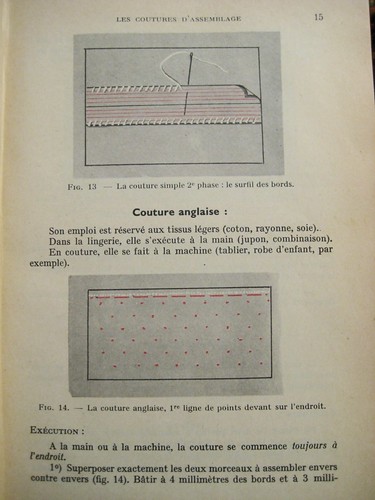
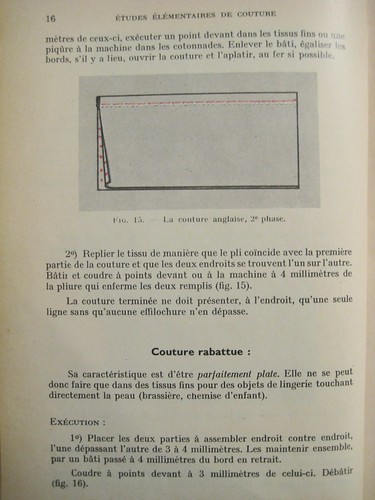
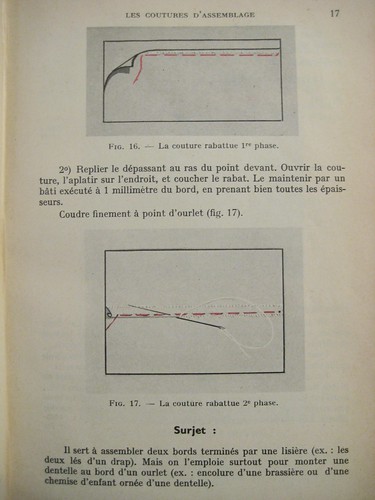
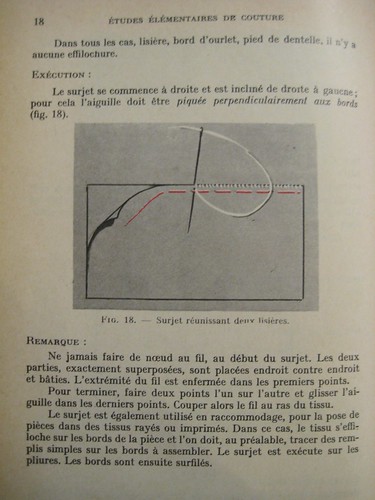 Those pages are from the section describing the different types of seams. There again most of them are made by hand, and they point those that are useful for lingerie. I also like that cotton fabric isn’t the only or even the main fabric mentionned here. I feel like wools, rayon and silks have a more central place.
Those pages are from the section describing the different types of seams. There again most of them are made by hand, and they point those that are useful for lingerie. I also like that cotton fabric isn’t the only or even the main fabric mentionned here. I feel like wools, rayon and silks have a more central place.
That said and old-fashionness put aside, those techniques are still totally appropriate today, whether you want to sew by hand or to adapt them to using a sewing machine.

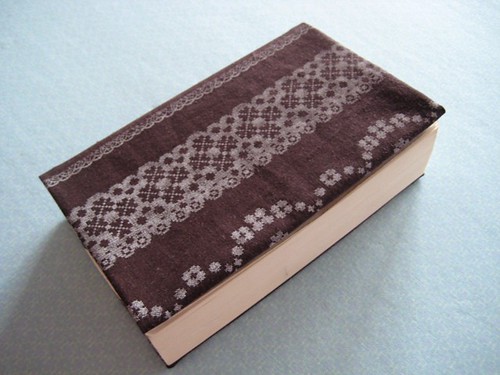
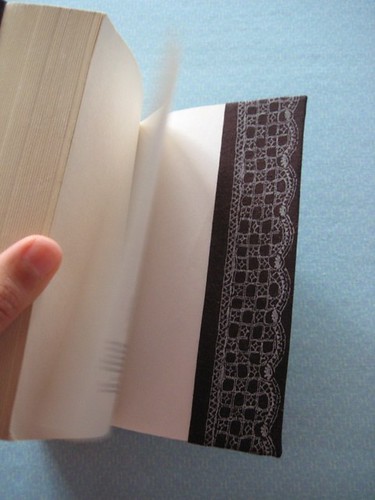

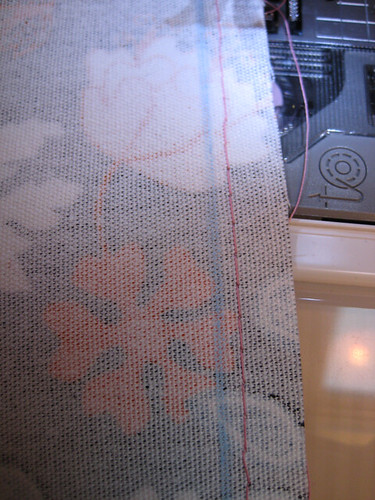

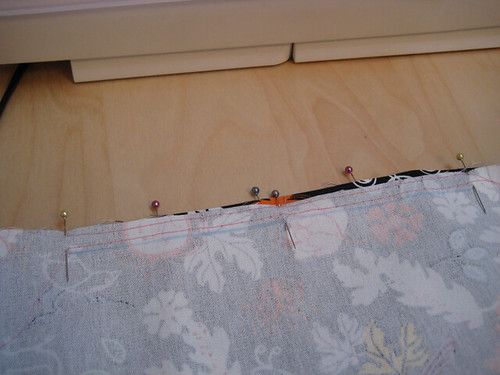
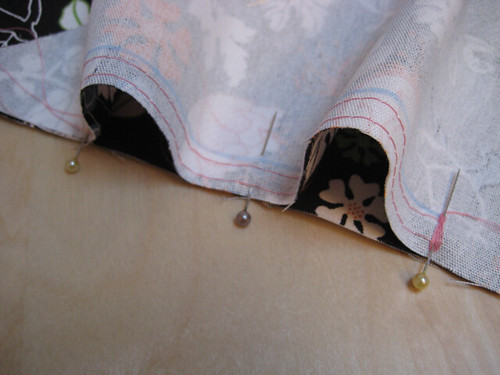
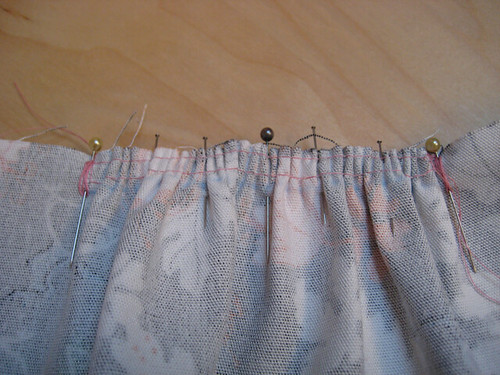
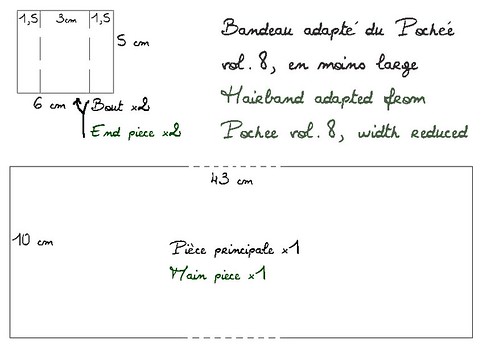
 Turn right side out and iron on.- for the end pieces: turn the sides toward the center, right side out. You should obtain a piece that is 3cm by 5cm. Iron on to mark folds.
Turn right side out and iron on.- for the end pieces: turn the sides toward the center, right side out. You should obtain a piece that is 3cm by 5cm. Iron on to mark folds.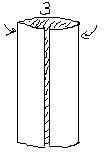 - Here you fold the ends of the main piece so that it’s the final size (1,25cm):
- Here you fold the ends of the main piece so that it’s the final size (1,25cm):